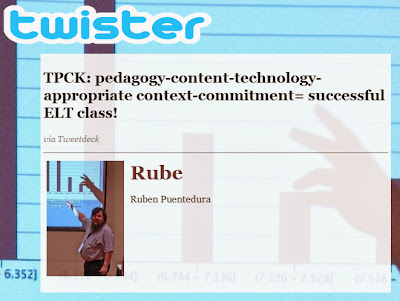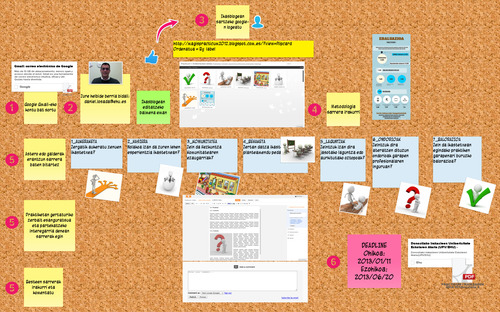Mural.ly is
a webtool that allows you to create a mural online and stick on it from
pictures (from your computer or directly from the web) and sticky notes to
different types of files or documents, links, videos, etc. You can also create
mindmaps. In addition, you can invite “collaborators” to your mural and allow
them to add comments to your work, or simply chat with them online. According
to the creators of the webtool, Mural.ly “fully unleashes the imagination of
teams of visual people” and it “can empower creativity by being visual,
collaborative and playful”.
But is it efficient
as an educational webtool for ELT students? In order to answer that question,
we are going to analyze it according to Nik Peachley’s criteria for evaluating
Web Tools and Apps, which can be found in his blog Nik's Learning Technology Blog. Nik has
been into the ELT field since 1992 and holds a Masters in Educational
Technology and ELT.
Evaluating "Mural.ly"
Accessibility: Mural.ly can be used with any
browser in any kind of computer.
User friendly: Sure. Mural.ly is super
simple and students will be able to learn how to use it quickly.
Registration: Yes, registration is
needed. This can be a bit troublesome since students must remember the
password. However, registration offers students more protection and makes any
potential misuse or mischief trackable back to its source.
Security: The free version of the webtool
does not seem to be so secure… since there is no way to report inappropriate
use. However, if you get the paid version, you can generate “password protected
links”.
Price: As mentioned above, it is freemium
(it has both a free and a commercial version).The free version is very complete
though.
Business model: They make money through the paid version. Also, the project has “great
investors like Intel Capital, Alta Ventures, 500 Startups and a top roster of
angel investors throughout the Americas”. So, I guess it may not need to
generate money by trading data, or disappear due to lack of funds.
Learning goal / outcome: Personally, I’d have each student create his or her own mural where
they would “stick” their assignments for their mates to comment, all throughout
the year. In other words, I’d use the mural as a means of interaction and
communication among mates and also student-teacher communication, as if the
mural was a huge binder for everyone to see. Because of this, the mural doesn’t
have a specific learning goal.
Interaction / communication: It totally supports interaction and communication between users. Students can
comment on each other’s projects, they can chat online, work collaboratively, and
most importantly, the teacher can keep track of his or her student’s
assignments and provide feedback anytime.
Assessment: Students will know that teachers are evaluating,
assessing and responding to their work, because the teacher can access the
mural anytime.
Because of all its advantages, I believe that Mural.ly is a good webtool to implement from the very beginning of the school year, and it provides our students with an online space of their own to store and share their projects.
Here there are some samples:
And this a small mural I created, just to try the webtool out:






